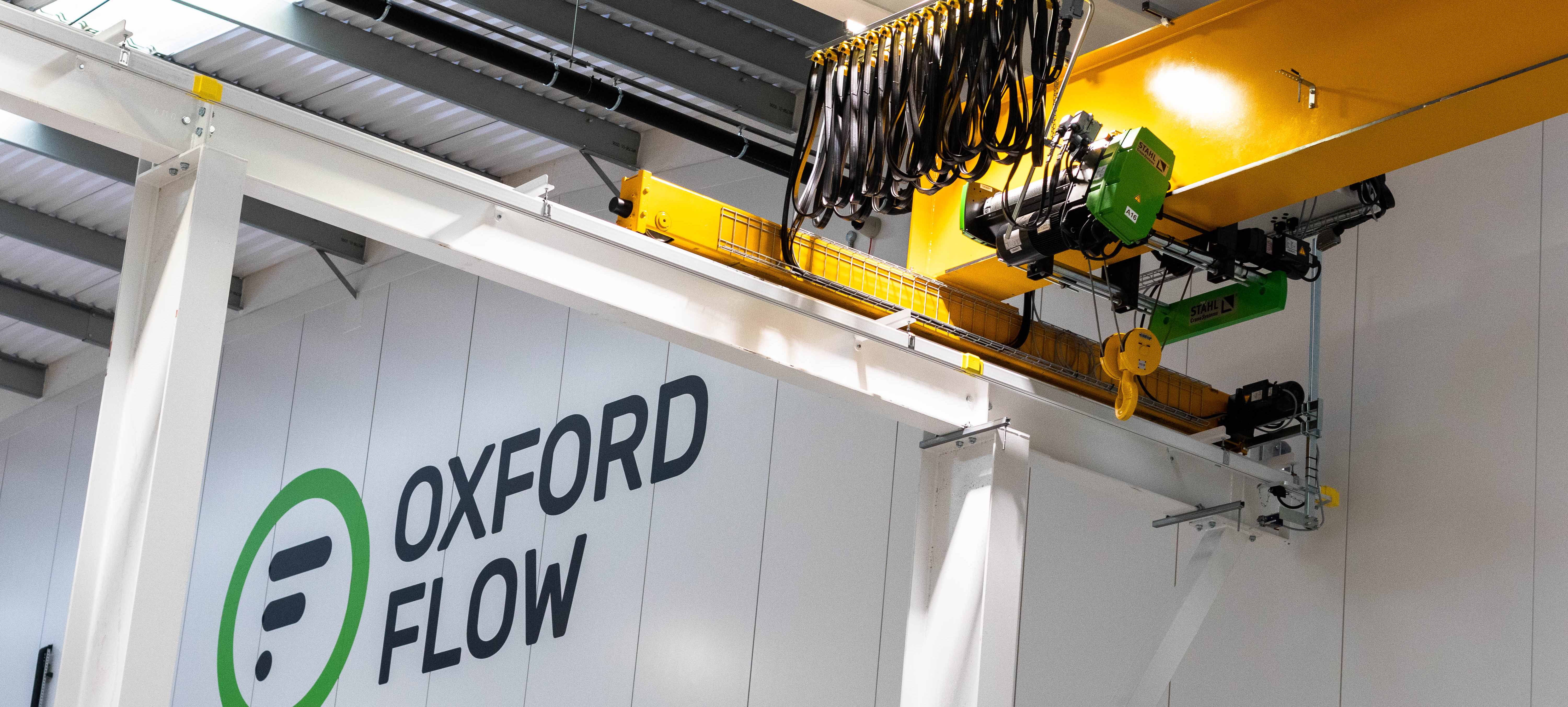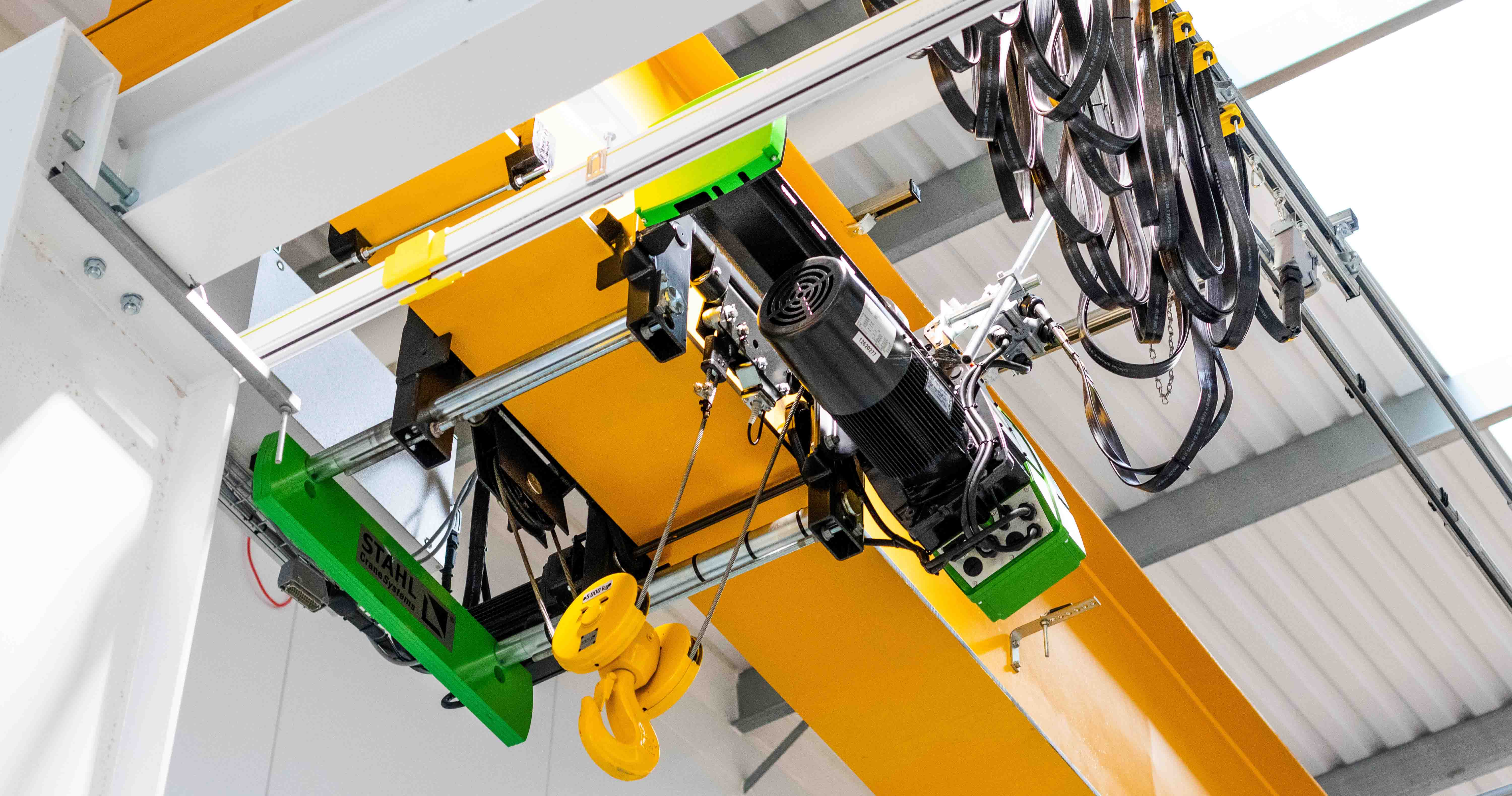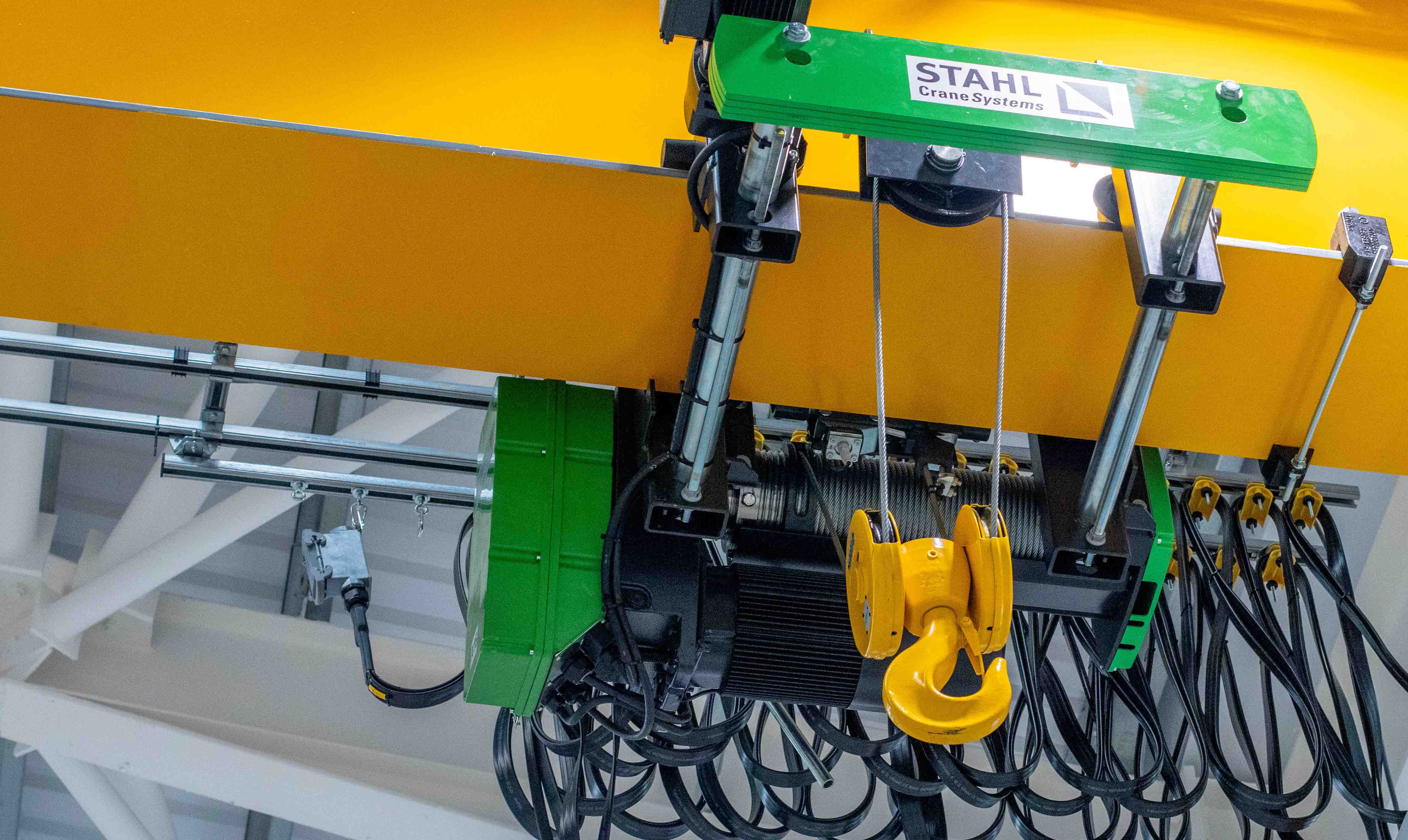
STAHL CraneSystems Powers Oxford Flow’s Future-Ready Manufacturing Facility
Bramley Engineering, a UK-based lifting systems specialist and overhead crane manufacturer, partnered with STAHL CraneSystems to implement a complete overhead crane solution.
Crane Systems | Hoisting & Lifting | by Dibble Digital | 22 Sep 2025
Bramley Engineering - original article
Project Summary
- Client: Oxford Flow, innovators in industrial valves and regulators
- Location: Witney, Oxfordshire
- Integrator: Bramley Engineering
- Objective: Future-proof lifting capability for larger assemblies, higher throughput, and safer handling
- Solution: STAHL CraneSystems hoist crane kit integrated onto a custom overhead travelling crane system
- Outcome: Greater productivity, safer handling, and capacity to support long-term growth

Background
Oxford Flow, a global leader in valve and regulator innovation, recently expanded to a new manufacturing facility in Witney, Oxfordshire. To support the company’s growth and increasing component sizes, the team required a high-performance lifting system that would deliver precise, repeatable handling for heavier assemblies while maintaining exceptional safety and reliability.
Engineering the Solution
The project centered on a custom-designed overhead travelling crane and runway system engineered to optimize Oxford Flow’s production processes. Using a 3D laser scan of the facility, Bramley created a precise digital model to ensure clearances, lifting heights, and travel paths were fully optimized.
At the heart of the system is a STAHL CraneSystems hoist, rated for 5,000 kg (5 metric tons) Safe Working Load (SWL) and 6 m Height of Lift. The hoist was selected for its robust design, FEM/ISO duty classification, and proven reliability in demanding industrial environments. Its precise control and smooth operation provide safe, efficient handling for Oxford Flow’s valve and regulator assemblies.
The integrated crane spans 24 meters and travels 30 meters along a purpose-built gantry runway, providing full coverage of the production area. The structure was engineered and installed by Bramley Engineering to complement the STAHL hoist and deliver optimal performance and rigidity.

Precision Manufacturing and Installation
The supporting gantry and crane beam were fabricated by Bramley Engineering in Northamptonshire, UK, and installed at the Witney site under controlled conditions. STAHL CraneSystems supplied the complete hoist and crane kit, ensuring all mechanical and electrical components met applicable European and UK standards.
Static and dynamic proof load testing was performed to 125% of SWL (6.29 tonnes). The test verified a bridge deflection of 27 mm, well within the 32 mm design limit, confirming both performance and serviceability.
Safety and Compliance
The system was designed and verified in accordance with:
- EN 15011 – Bridge and gantry crane design and safety requirements
- EN 1993-6 (Eurocode 3) – Design of crane-supporting structures
- EN 1991-3 (Eurocode 1) – Actions from cranes
- LOLER 1998 and BS 7121 – UK lifting operations regulations and codes of practice
Together, these standards ensure long-term compliance, reliability, and operational safety.

Results
- Lifting Capacity: 5,000 kg SWL
- Bridge Span: 24 m
- Runway Length: 30 m
- Height of Lift: 6 m
Key Outcomes:
- Increased throughput and faster handling cycles
- Reduced manual handling and improved operator safety
- Scalable design for future production demands
- Seamless integration into Oxford Flow’s facility layout
Trusted Technology, Global Support
From precision hoist engineering to seamless system integration, STAHL CraneSystems (part of Columbus McKinnon Corporation) provides lifting technology that powers safe, efficient operations worldwide.
For more information about our engineered hoist and crane solutions, visit columbusmckinnon.com/stahlcranesystems.

 India - EN
India - EN


